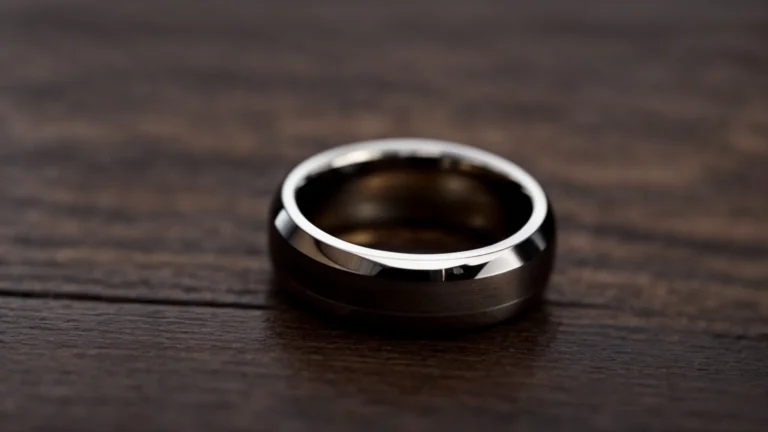Understanding PTSD Residential Treatment Centers
Questions Answered in This Article:
- Why Outpatient Care Often Falls Short for Severe PTSD
- What Happens in PTSD Residential Treatment?
- How Long Does PTSD Residential Treatment Last?
- Who Benefits from Residential PTSD Treatment?
‘
Post-traumatic stress disorder (PTSD) affects more than mental health—it alters the brain’s sense of safety and trust. Symptoms like flashbacks, numbness, and hypervigilance can disrupt relationships and daily life. While outpatient therapy can help, severe or complex trauma often requires a higher level of care. PTSD residential treatment offers a structured, supportive setting where healing can happen without daily triggers.
About 6% of U.S. adults experience PTSD, according to the National Center for PTSD. Residential PTSD treatment centers use evidence-based therapies and holistic care to restore stability and improve well-being. Centers like Rock View Recovery combine clinical expertise with compassion, making them among the best residential treatment for PTSD for long-term recovery.
Why Outpatient Care Often Falls Short for Severe PTSD
Outpatient therapy can provide valuable support, but it may not be enough for individuals experiencing severe PTSD or complex trauma. Daily exposure to triggers, lack of consistent supervision, and limited session time can make progress difficult. For those struggling with intense flashbacks, hyperarousal, or co-occurring conditions like substance misuse, a more immersive solution is often necessary.
Residential treatment programs for PTSD remove these barriers by creating a stable, structured environment that promotes safety and focus. This higher level of care allows individuals to fully engage in therapy and skill-building without the constant stress of outside triggers, leading to more effective and lasting results.
What Happens in PTSD Residential Treatment?
Starting a residential treatment program for PTSD can feel overwhelming without knowing what to expect. These programs offer a structured, supportive environment designed to create a sense of safety while allowing flexibility for individualized care. Clients engage in a variety of therapy sessions and wellness activities to address trauma on multiple levels.
Core elements of residential PTSD care include:
- Evidence-based behavioral therapies such as Cognitive Behavioral Therapy (CBT), Eye Movement Desensitization and Reprocessing (EMDR), and Prolonged Exposure Therapy.
- Individual and group therapy sessions to provide both personalized attention and peer support.
- Medical and psychiatric services for co-occurring conditions such as depression or anxiety.
- Holistic treatment options including mindfulness, yoga, and art therapy for emotional regulation.
A typical day at a PTSD treatment center includes morning therapy sessions focused on trauma processing, afternoon skill-building activities, and structured downtime for journaling or mindfulness. Evenings often feature group therapy or guided relaxation exercises. This predictable routine helps reduce anxiety and supports emotional stability.
How Long Does PTSD Residential Treatment Last?
The duration of residential care varies based on individual needs, severity of symptoms, and co-occurring conditions. Most residential PTSD treatment programs last between 30 and 90 days, though some clients may require extended stays for complex trauma. Short-term programs provide stabilization and core coping skills, while longer programs allow for deeper therapeutic work and relapse prevention planning.
Working with a treatment team ensures that the treatment plan is personalized to match progress and goals. This flexibility helps individuals achieve sustainable recovery rather than short-lived improvements.
Who Benefits from Residential PTSD Treatment?
Residential PTSD treatment is designed for individuals who need a higher level of care than outpatient therapy can provide. While often associated with military veterans, these programs also serve survivors of natural disasters, childhood abuse, medical trauma, and other types of trauma. First responders and healthcare professionals frequently seek inpatient treatment due to the intensity of their experiences.
Indicators that residential care may be necessary include:
- Severe PTSD symptoms that interfere with daily functioning
- Limited progress in outpatient care despite effort
- Co-occurring conditions like substance misuse or depression
- Unsafe or highly triggering home environments
Delaying care can worsen symptoms, making recovery more challenging. A comprehensive treatment plan in a residential setting ensures early intervention and stability while addressing the root causes of trauma.
Key Benefits of PTSD Residential Treatment Centers
Residential treatment programs for PTSD offer significant advantages over outpatient care by providing a controlled environment and continuous support. These programs integrate multiple treatment options to address both mental and physical health.
Benefits include:
- 24/7 clinical supervision to manage emotional crises
- Distance from triggering environments for focused healing
- Whole-person care including fitness, nutrition, and behavioral health services
- Peer support networks that foster shared understanding and accountability
Research published in the Journal of Traumatic Stress (2022) shows that intensive inpatient treatment significantly reduces PTSD symptoms, particularly for individuals with complex trauma histories. By removing external stressors and offering comprehensive treatment plans, these centers create the conditions necessary for lasting recovery.
Cost of PTSD Residential Treatment & Insurance Coverage
The cost of residential treatment programs for PTSD varies depending on location, length of stay, and amenities. On average, programs can range from $10,000 to $30,000 per month, though many centers work with insurance to offset expenses. Most major insurance providers, including PPO plans, often cover a portion of the cost for inpatient treatment when deemed medically necessary.
Before choosing a treatment center, verify insurance benefits and explore financing options if needed. At Rock View Recovery, our team assists families in navigating coverage details to make care accessible without unnecessary stress.
Choosing the Right PTSD Residential Treatment Program
Finding the right treatment center is essential for achieving positive outcomes. Quality programs offer both clinical excellence and a calming environment for recovery.
Important features to look for include:
- Accreditation and trauma-specialized clinicians
- Use of evidence-based therapies like CBT and EMDR
- Low staff-to-client ratios for personalized care
- Strong aftercare planning and family involvement
- Amenities that promote rest and emotional well-being
Location plays a major role in healing. Centers in peaceful, natural settings—such as Arizona’s desert landscapes—can provide a sense of calm essential for recovery. Rock View Recovery offers this combination of science-backed care and serene surroundings, making it an excellent choice for individuals seeking comprehensive support.
Find the Best Residential Treatment for PTSD Near You
Understanding PTSD is the first step toward recovery. While the effects of trauma can feel overwhelming, the right treatment options make healing and rebuilding a meaningful life possible. Residential PTSD treatment programs provide the structured, immersive care needed to help individuals manage their symptoms and move forward with confidence.
If you or a loved one is struggling with trauma, now is the time to take action. Contact Rock View Recovery today at (602) 962-1795 or email [email protected] to learn how our personalized treatment plans, compassionate clinicians, and supportive environment can help you achieve lasting recovery. Your path to healing starts with one call.


